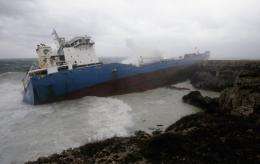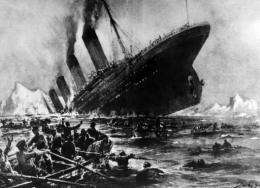In shipwrecks, men more likely to survive: study

The notion that women and children are rescued first during a shipwreck is a myth, scientists said Monday after analyzing 18 maritime disasters that show men generally save themselves.
The sinking of the Titanic -- in which 70 percent of the women and children on board were saved compared to 20 percent of the men -- is a rare exception to the rule, said the study by Swedish researchers in the Proceedings of the National Academy of Sciences.
Instead, captain and crew tend to look out for their own safety first, men on board typically have twice the survival rate of women, and children fare the worst.
The data on maritime disasters from 1852 to 2011 included 15,000 passengers and crew members of more than 30 different nationalities.
The analysis did not include the Italian cruise ship, Costa Concordia, whose captain came under fire earlier this year for leaving the deadly scene of shipwreck before all 4,200-plus passengers were evacuated. Thirty-two people died.
But the study showed that his behavior may not have been all that unusual.
Historical data shows that crew members "have a higher survival rate than passengers and that only nine of 16 captains went down with their ships," said the study.

In disasters when the captain took the lead in alerting passengers and crew to prioritize the needs of women and children, they tended to fare better.
Otherwise, "self-regarding players comply with norms only if the cost of the social stigma of violation exceeds the cost of compliance," said the study.
In the case of the Titanic, the captain ordered women and children to be saved first and there were reports of officers shooting at any men who disobeyed the order.
Women had a survival advantage over men in just two of the shipwrecks studied, the Titanic in 1912 and the Birkenhead, a British ship that went aground in the Indian Ocean in 1852.
Markedly fewer women than men survived in 11 disasters, and there was no clear evidence of a difference in the remaining five studied.
When researchers focused on British shipwrecks in particular, they found that women consistently fared worse than men, even though the order to save women and children first was given more often on British ships.
"This contrasts with the notion of British men being more gallant than men of other nationalities," said the study authored by Mikael Elindera and Oscar Erixson of the Department of Economics, Uppsala University, Sweden.
They also noted that similar conclusions have been reached in other studies of human behavior during natural disasters.
"What happened on the Titanic seems to have spurred misconceptions about human behavior in disasters," the researchers concluded.
More information: “Gender, social norms and survival in maritime disasters,” by Mikael Elinder and Oscar Erixson, PNAS, 2012.
Journal information: Proceedings of the National Academy of Sciences
(c) 2012 AFP


















